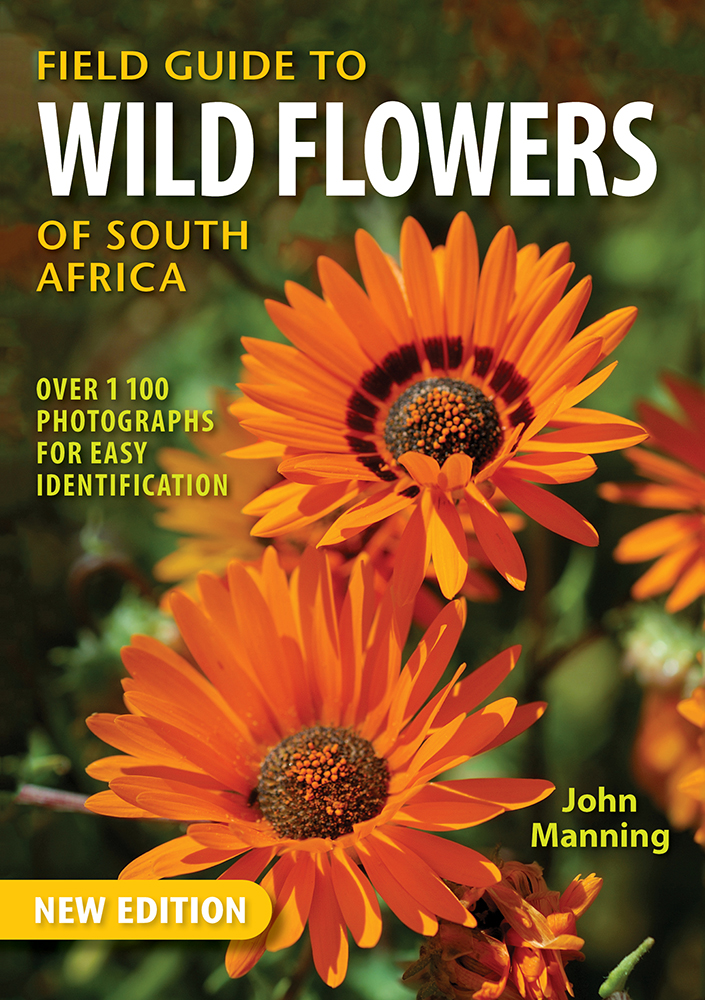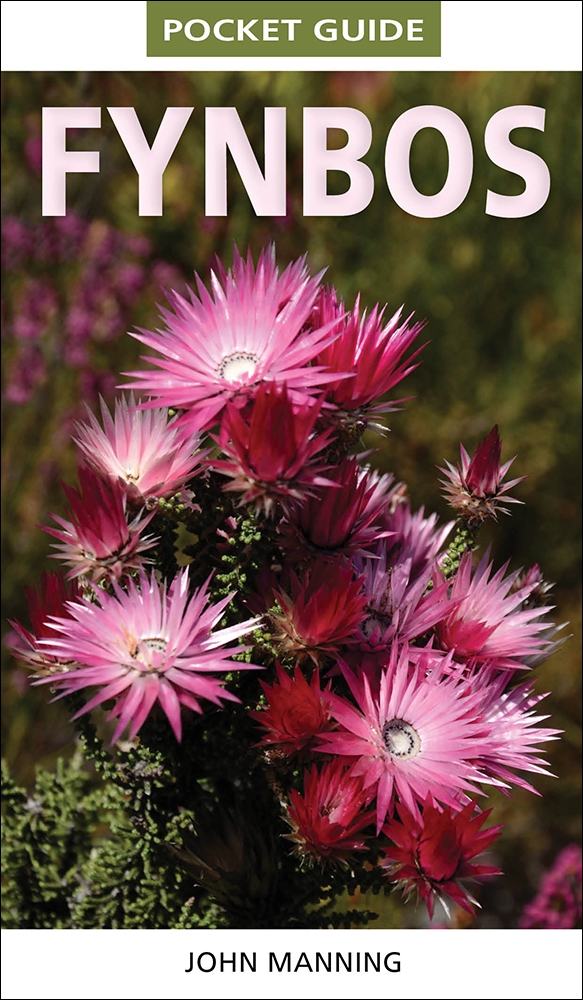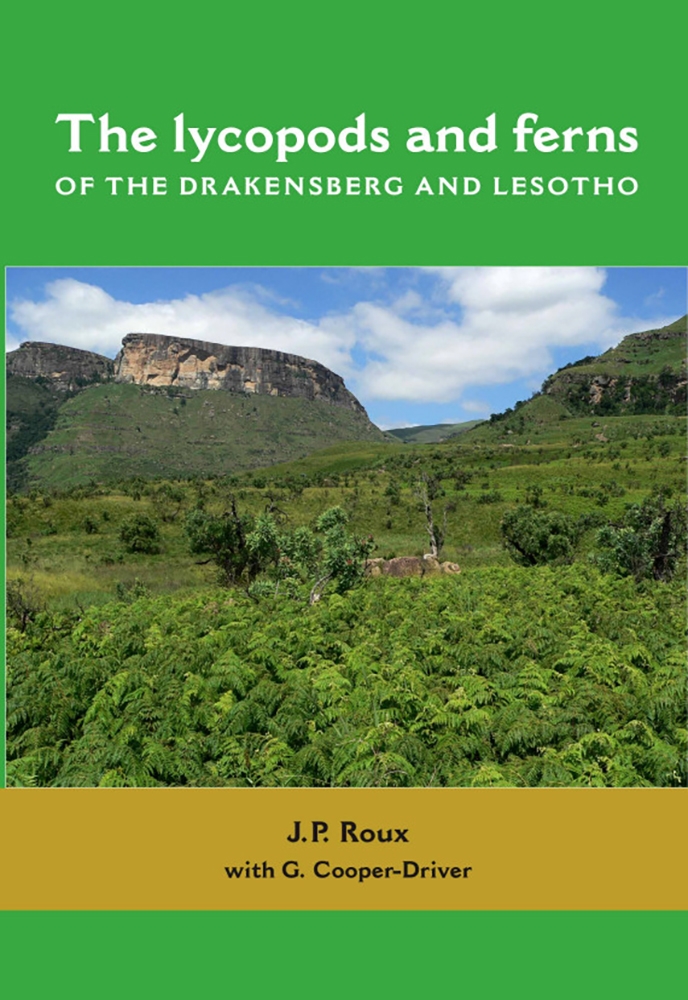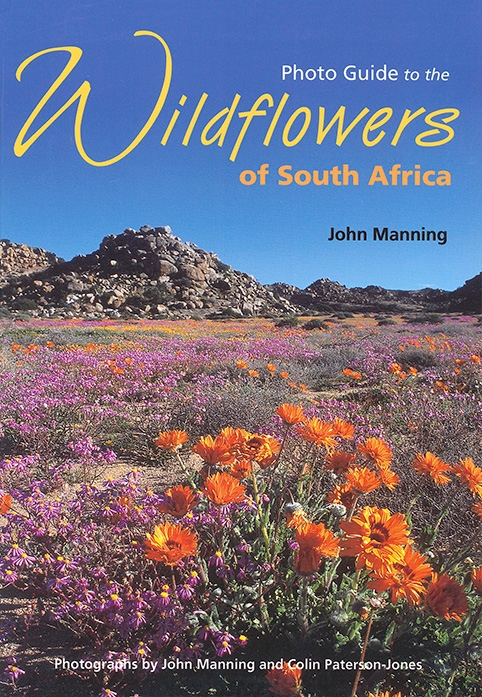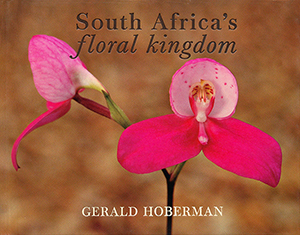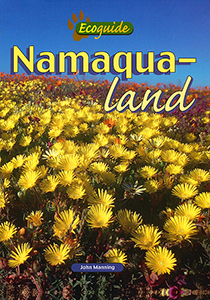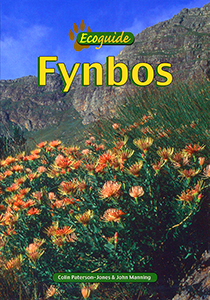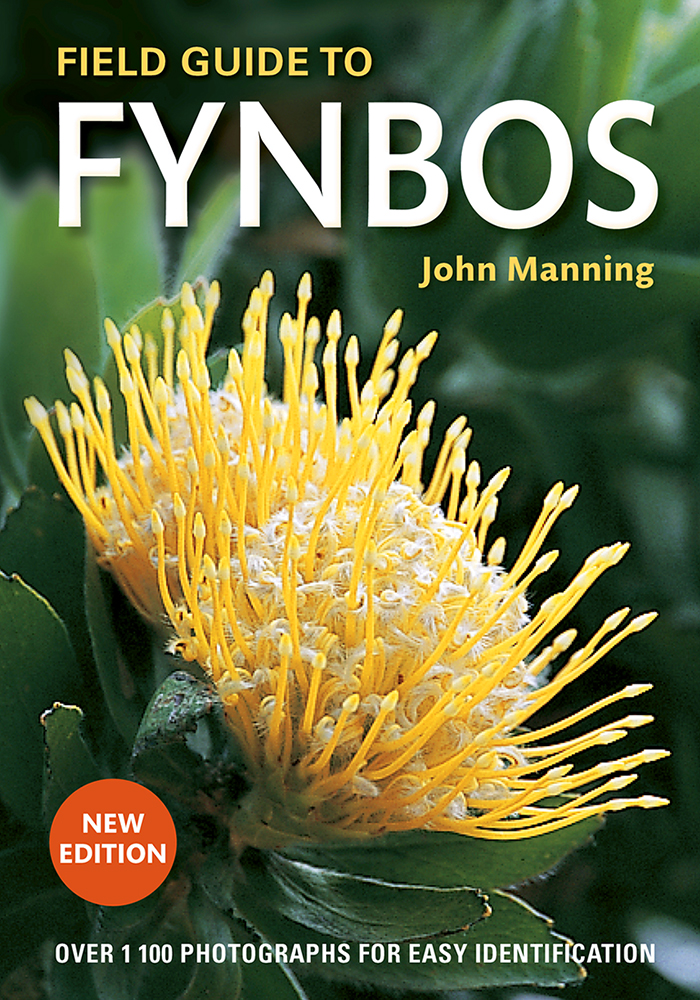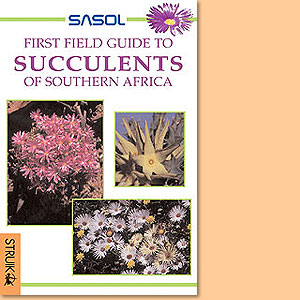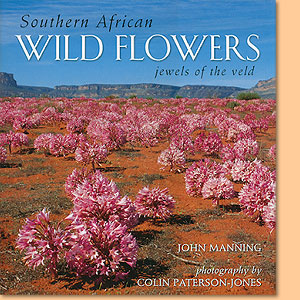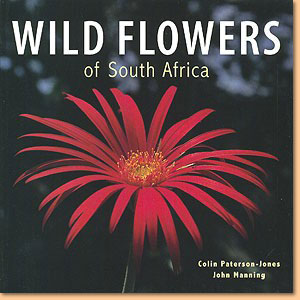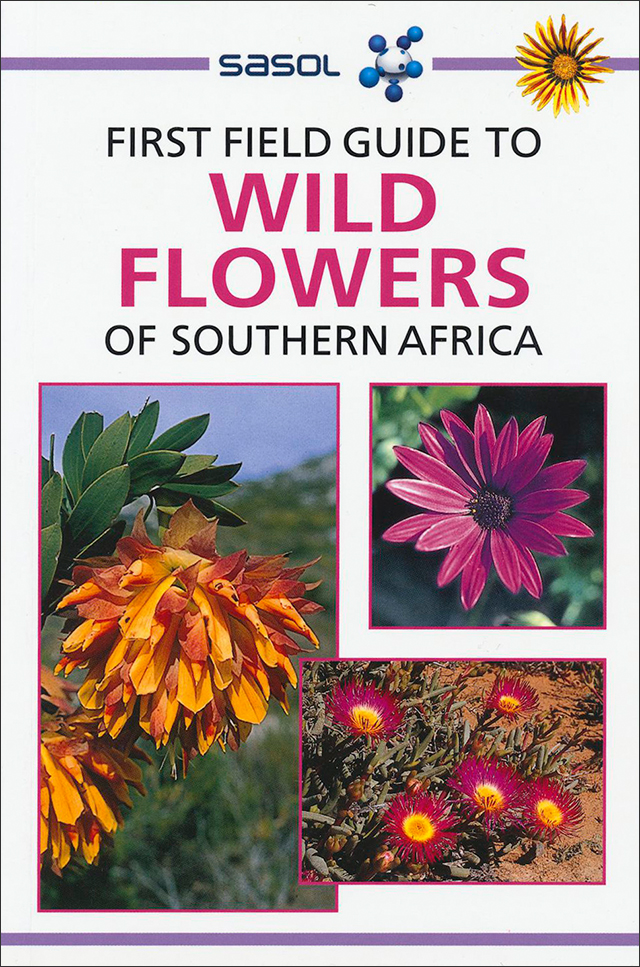Field Guide to Wild Flowers of South Africa, by John Manning
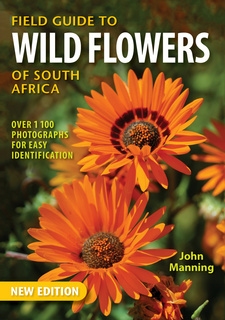
Field Guide to Wild Flowers of South Africa, by John Manning. Penguin Random House South Africa, Struik Nature. 2nd revised edition. Cape Town, South Africa 2019. ISBN 9781775846765 / ISBN 978-1-77584-676-5
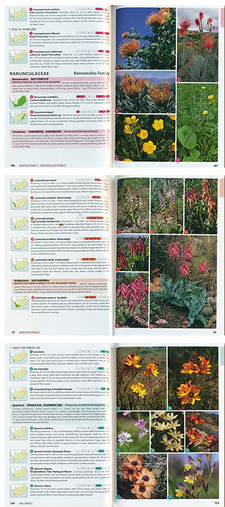
Images from Field Guide to Wild Flowers of South Africa, by John Manning. ISBN 9781775846765 / ISBN 978-1-77584-676-5
Field Guide to Wild Flowers of South Africa by John Manning was commissioned by Pippa Parker of Struik Nature and produced by her expert team: designer Martin Endemann, project manager Leni Martin and freelance editor Tina Mossmer.
Almost 20 000 different wild flowers are indigenous in South Africa, constituting as much as 10 per cent of all flowering plant species known throughout the world, and the number continues to grow each year as new species are discovered and described. A great many of them produce attractive flowers. Notable exceptions are grasses, sedges, reeds and rushes, together comprising some 1 800 species in South Africa, and most trees, which number an additional 1 000 or so species. The flowers of these groups are mostly small or insignificant, and the species require specialist knowledge for their identification. Excluding them still leaves about 17 000 species of flowering herbs and shrubs. Trying to identify this staggering variety is a daunting undertaking. No single book can hope to cover more than a fraction of all the species, but Field Guide to Wild Flowers of South Africa approaches the problem by providing the tools and knowledge that will enable the user to identify wild flowers with greater confidence and skill. More than 1100 species from across the region are illustrated, with descriptive text that has been carefully formulated to emphasise those characters that are most important in distinguishing each species. At a higher level, each genus and family are carefully diagnosed, enabling the user to correctly classify to those levels even plants that have not been included.
Identifiying plants
South Africa's wealth of wild flowers makes the identification of all but the most distinctive species a daunting challenge. To make the task easier, this guide provides information at several levels, ranging from species through genus to family. The primary aim is to provide the general user with the skills and knowledge to identify the wild flowers that are featured in any flower guide, not only this one. Field Guide to Wild Flowers of South Africa assists users in naming the more common plant families, genera and species by identifying the features that characterise each of the categories. Familiarity with plant families and genera, and the kinds of features that are important in identifying them, is an essential first step in beginning the more complex task of identifying individual species. Once you have mastered this basic knowledge, you will be able to approach the species accounts in this and other guides with greater ease and confidence. More than 1 100 indigenous species are featured in this book. Although this number represents just a fraction of the nearly 20 000 plant species that occur in South Africa, it includes the more common and conspicuous ones - those that are prevalent in well-visited areas, and especially those with showy blooms that attract attention. Essentially, this excludes any plants with flowers or flowerheads less than 10 mm across. The choice of species was driven by experience gained over two decades of fieldwork across many thousands of kilometres. Parts of the country that are most accessible and regularly visited by wild-flower enthusiasts have been given precedence over those that are inaccessible or poor in wild flowers. Many plant families have had to be excluded. Among them are all the trees, for which many specialist guides exist and field identification is in any case based primarily on vegetative features, mainly foliage. Also not covered are the grasses and related families, including the Cape reeds, or restios, and the sedges. Although very important ecologically and economically, these families require specialist knowledge and microscopic study for their identification. Even among the genera that are included, the coverage of the species is necessarily uneven. Comprehensive identification of even a representative sample of species in very large genera, such as Erica (860 spp.), Senecio (±300 South African spp.), Aspalathus (±280 spp.) and Helichrysum (250 South African spp.) is beyond the scope of a guide such as this. [...]
This is an excerpt from Field Guide to Wild Flowers of South Africa, by John Manning.
Title: Field Guide to Wild Flowers of South Africa
Author: John Manning
Publisher: Penguin Random House South Africa
Imprint: Struik Nature
2nd revised edition. Cape Town, South Africa 2019
ISBN 9781775846765 / ISBN 978-1-77584-676-5
Softcover, 15 x 21 cm, 488 pages, throughout colour photographs, English text
Manning, John im Namibiana-Buchangebot
Field Guide to Wild Flowers of South Africa
Manning's Field Guide to Wild Flowers describes more than 1100 of shrubs and herbs of South Africa.
The lycopods and ferns of the Drakensberg and Lesotho
The lycopods and ferns of the Drakensberg and Lesotho is the most comprehensive account of lycopod and fern species occurring in the Drakensberg and Lesotho region.
Photo Guide to the Wildflowers of South Africa
This excellent photo guide includes nearly 900 of the most common and conspicuous wildflowers that occur in South Africa and the neighbouring countries of Lesotho, Swaziland and Namibia.
South Africa's Floral Kingdom (Hoberman)
South Africa's Floral Kingdom is the collaboration of Gerald Hoberman and John Manning, an authority on the South African flora.
Ecoguide Namaqualand
This Ecoguide describes 200 wildflowers and their background on birds, insects, spiders, reptiles and mammals of Namaqualand.
Ecoguide Fynbos
This ecoguide introduces 400 wildflowers and birds, insects, spiders, reptiles and mammals in their environment in the Fynbos region of South Africa.
Field Guide to Fynbos
Field Guide to Fynbos features 1150 species of Fynbos, focusing on the most common and conspicuous wild flowers of South Africa.
First Field Guide to Succulents of Southern Africa
Information at a glance through superb photographs, maps and easy-to-read text
Southern African Wild Flowers: Jewels of the Veld
Celebrates the beauty of Southern African wild flowers that truely are to be said the jewels of the veld along the landscapes.
Wild Flowers of South Africa
Offers a glimpse into South Africa’s rich floral heritage, enabling the reader to enjoy our most spectacular flowers
First Field Guide to Wild Flowers of Southern Africa
First Field Guide to Wild Flowers of Southern Africa is an invaluable resource for the beginner, providing information at a glance through superb photographs, maps and easy-to-read text.

